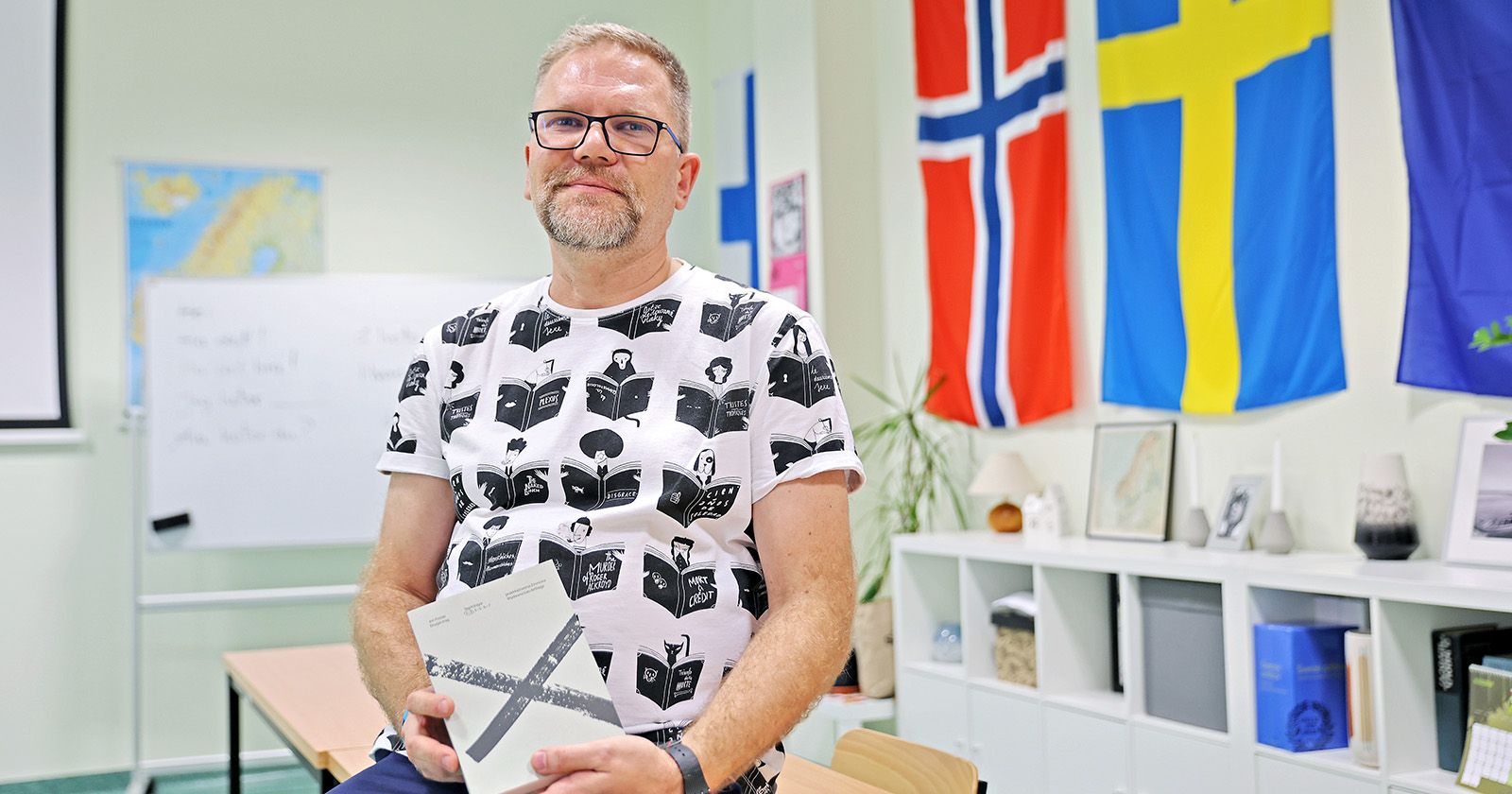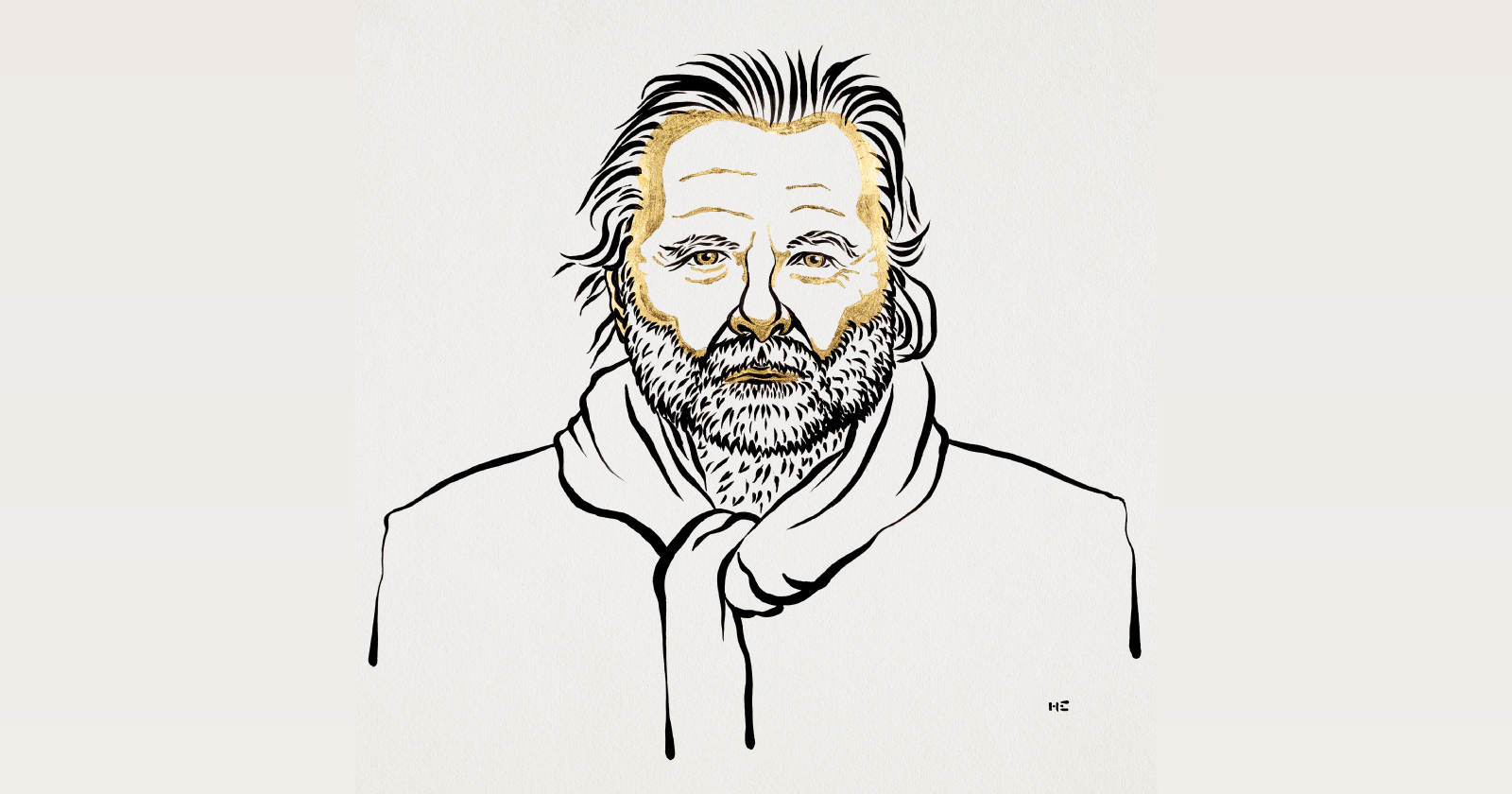 Humanities and arts
Humanities and arts
Hypnotizing rhythm of the Nobel Prize in Literature
A Norwegian writer Jon Fosse became this year's laureate of the Nobel Prize in Literature. The Swedish Academy honored him for “innovative arts and prose, which give voice to what is unspoken". – This literature is exceptional, deeply rooted in the culture of the Nynorsk language and the region of Vestlandet in the south-west of Norway – comments Paweł Kaźmierczak, M.A. from the Chair of the History of Scandinavia and South eastern Europe of NCU.
This year's Nobel prize winner in Literature, Jon Fosse was born in 1959 in Haugesund, on the western coast of Norway. His abundant artistic activity is performed in the Nynorsk language consists of numerous dramata plays, novels, poetry writings, essays, books for children, and translations. Fosse is one of the most often played playwrights in the world, and he is more and more recognized for his prose.
The favorite becomes the laureate
Every year, the decision on the Nobel's Prize in Literature stirs up a lot interest and emotion both among media and readers. - The same questions return: Who this year will be awarded the laurel and the sum of 11 million Swedish Crowns (kr); will it be for prose, poetry, or drama; will it go to someone well known or will the Academy surprise us again? - says Paweł Kaźmierczak, M.A. from drama the Chair of the History of Scandinavia and South eastern Europe of NCU, a lecturer of Norwegian, Swedish and Danish languages, a specialist in literature, translator specializing in contemporary prose and poetry of Scandinavia. - on the contrary to most common opinions, no verdict is incidental. It is proceeded by stormy debates, and many months in advance a list of potential candidates is made – the members of Academy have their favorites and they make a decision not only after they have studied the body of work of a given artist but also after a deep analysis of the analyses ordered beforehand.

Ill. Niklas Elmehed © Nobel Prize Outreach
The name of this year's laureate is not a surprise – it appeared many times in the rankings of bookies and experts, and the writings of the writings Norwegian laureate was acquiring for years more and more recognition among literary critics and academicians. - During the last year's Gala of American National book Award, Merve Emre, an American literature scholar and critic appeared in a light blue dress with the title of Fosse's main work “Heptalogy" embroided at her waist belt – adds Paweł Kaźmierczak, M.A. - Fosse himself did not seem surprised with the verdict of the Academy. As an author and a man, he is very self-confident.
In a hypnotic forest
How can the literary work by this year's laureate be characterized? The NCU researcher emphasizes that, on one hand its features are simplicity, openness and impact on the reader, on the other hand however it is not light, easy or pleasant.
The author often uses short sentences combined in longer ones, winding sequences which do not comply with rules of punctuation – describes Paweł Kaźmierczak, M.A. - This is very special literature, deeply rooted in the culture of the language of Nynorsk (one of two official writings standards of the Norwegian language), and situated in the south western region of Vestlandet – the scenery of his artistic work are fjords, mountains, the environment marked with generation differences, where the dead and the alive are still in touch with one another.

photo Andrzej Romański
When you read texts by Fosse or watch his plays in the theater, you may get (one the impression that you enter a strange forest. The main characters often have no names, no external features, and they repeat their roles over and over again. The rhythm of this text becomes hypnotizing, and after a time readers realize that the meaning of the particular lines gradually changes with every repetition – almost unnoticeably new perspectives which offer new interpretations open. And this is how we go deeper and deeper into a thick forest of meanings and symbols. And it is the repetitions, almost choruses that contribute to extraordinary musicality of fosse's writings, which at his art. Is indispensable – it resembles stanzas and refreins typical of the antique theater.
The Polish reception
This year's Nobel Prize winner – recognized as one of the most outstanding contemporary European playwrights is an author of poetry, books for children and essays, but his debut was as a prose writer with his “Red, Black" novel in 1983. His first play “And We'll Never Be Parted" was on in 1994. The Polish audience had the opportunity to watch his plays in the first decade of the 21st century. Works by Fosse also appeared in a printed version in a theatrical journal Dialog. An outstanding translator Halina Thylwe translated into Polish the following plays: “Mother and Child", “Nightsongs", “Visits", “A Summer's Day", and “The Son".
In interviews the author describes himself as “a heavy metal writer" and “a literary singer of country music" - adds Paweł Kaźmierczak, M.A. - His works do not lack in a kind of duality; withdrawal and being present at the same time, the strive to live and the need of annihilation and death.
Polish readers have the opportunity to read prose by Fosse due to the publishing house ArtRage, which has published this year the first two parts of the author's opus magnum - “Heptalogy" translated by Iwona Zimnicka.
The Nobel Prize in Literature has been awarded since 1901. So far, it is seven times that the laureates have not been appointed, in: 1914, 1918, 1935, 1940, 1941, 1942 and 1943. Until 2023, the award has been granted to 120 laureates, the youngest of whom was Rudyard Kipling, author of the Jungle Book, who was 41 when he was honored by the Swedish Academy. The older laureate has been Doris Lessing, who at the time of being awarded in 2017 was 88 years of age. Withing the winners of the Nobel Prize in Literature there are 17 women –the first one was a Swedish writer Selma Lagerlöf (in 1909). Last year the group of women laureates was joined by a French writer Annie Ernaux. The full list of the awarded: https://www.nobelprize.org/prizes/lists/all-nobel-prizes-in-literature/
 NCU News
NCU News







 Social sciences
Social sciences
 Campus life
Campus life